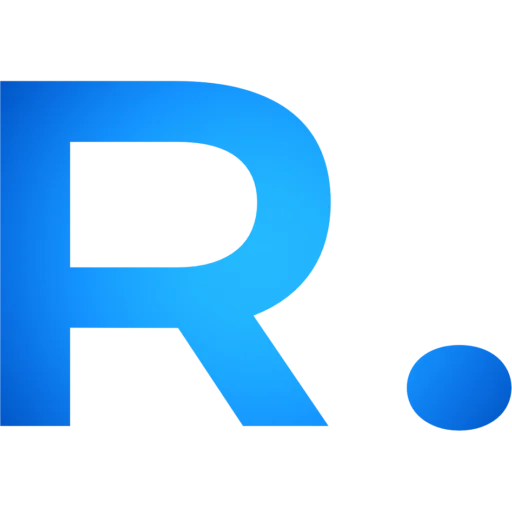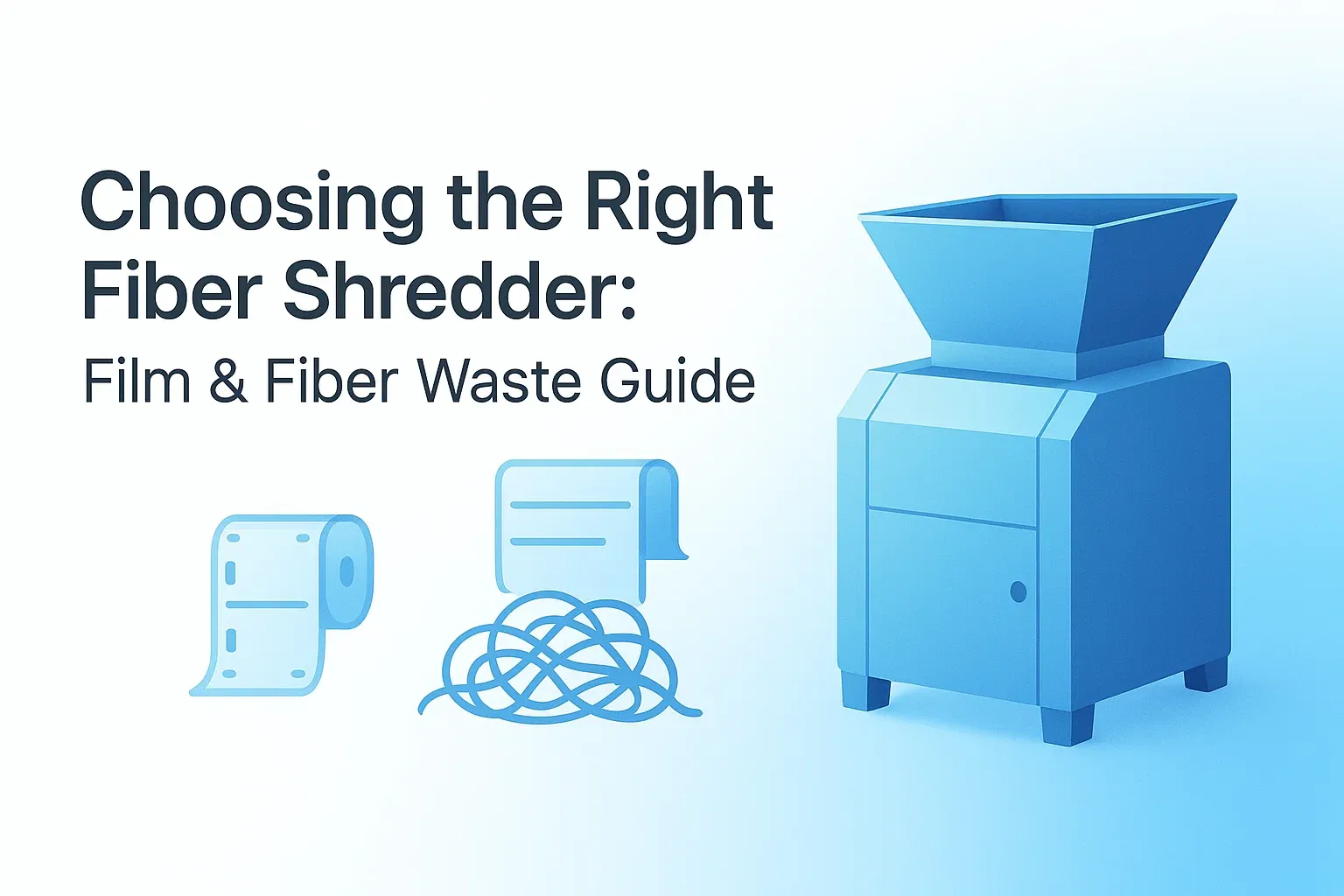Poruszanie się po świecie niszczarek przemysłowych w celu znalezienia idealnego rozwiązania dla odpadów foliowych i włókiennych może wydawać się przytłaczające. Przy tak wielu dostępnych opcjach, wskazanie właściwego niszczarka włókien jest kluczowy dla wydajnego i ekonomicznego zarządzania odpadami. Niniejszy przewodnik ma na celu uproszczenie tego procesu, oferując praktyczne porady i spostrzeżenia, które pomogą Ci wybrać sprzęt do niszczenia idealnie dostosowany do Twoich potrzeb operacyjnych. Zajmiemy się kluczowymi czynnikami, takimi jak charakterystyka materiału, objętość przetwarzania i pożądana spójność wyjściowa, a także przyjrzymy się temu, co wyróżnia niektóre marki i modele.
Zrozumienie Twoich specyficznych wymagań dotyczących niszczenia dokumentów
Zanim zagłębisz się w specyfikacje maszyn, pierwszym niezbędnym krokiem jest dogłębna ocena własnego strumienia odpadów i celów przetwarzania.
Typ materiału: Nie wszystkie folie i włókna są sobie równe
Zrozumienie dokładnej natury materiałów, które chcesz zniszczyć, jest podstawą wyboru skutecznego rozwiązania. niszczarka włókien.
- Odpady foliowe: Ta kategoria często obejmuje materiały takie jak plastikowe torby, folie termokurczliwe, folie rolnicze i elastyczne opakowania. Materiały te, choć pozornie lekkie, mogą stwarzać problemy, takie jak plątanie się wokół wałów niszczarki lub wymaganie specjalnych mechanizmów tnących, aby zapobiec rozciąganiu i zapewnić czyste cięcie. Odpowiednia niszczarka będzie musiała skutecznie chwytać i przetwarzać te lekkie, elastyczne przedmioty.
- Odpad włóknisty: Ta szeroka kategoria obejmuje różnorodne materiały, w tym:
- Tekstylia: Ubrania, tapicerka, dywany i resztki produkcyjne, np. krawędzie.
- Materiały włókniste przemysłowe: Liny, siatki (sieci rybackie, sieci rolnicze), włókno szklane, włókno węglowe (wymagające specjalistycznych rozdrabniaczy o dużej wytrzymałości), włókna syntetyczne i włókna naturalne, takie jak bawełna, juta lub odpady konopne. Materiały te często wymagają solidnych niszczarka włókien konstrukcje ze względu na ich wytrzymałość, ścieralność i tendencję do owijania się wokół ruchomych części.
Objętość przetwarzania: Ile dokumentów trzeba zniszczyć?
Ilość generowanych przez Ciebie odpadów będzie miała bezpośredni wpływ na wymagany rozmiar, przepustowość i ogólną wytrzymałość Twojego systemu. niszczarka włókien.
- Niska głośność: Idealne dla małych firm, projektów pilotażowych lub operacji z okresowymi potrzebami niszczenia. Kompaktowe, mniej wydajne modele mogą wystarczyć.
- Średnia objętość: Nadają się do regularnego, codziennego niszczenia w średniej wielkości zakładach produkcyjnych lub centrach recyklingu. Niszczarki te oferują równowagę między pojemnością a powierzchnią.
- Duża objętość: Niezbędne do dużych operacji przemysłowych, miejskich zakładów recyklingu lub ciągłego przetwarzania 24/7. Wymagają one ciężkich niszczarki włókien o dużej przepustowości i trwałości.
Oczekiwany wynik: Do czego zostanie wykorzystany rozdrobniony materiał?
Końcowe zastosowanie rozdrobnionego materiału dyktuje wymagany rozmiar cząstek i jednorodność. Jest to krytyczny czynnik w konfiguracji niszczarka włókien.
- Rozmiar munduru: Niezbędne w wielu procesach recyklingu, takich jak ponowne przędzenie rozdrobnionych włókien, ich wykorzystanie jako wypełniacza lub zagęszczanie. Spójne sortowanie poprawia jakość i użyteczność produktu pochodzącego z recyklingu.
- Drobne cząsteczki/krótkie włókna: Niezbędne w zastosowaniach takich jak peletyzacja, wytwarzanie mieszanek, produkcja materiałów nietkanych lub tworzenie wysokiej jakości produktów z recyklingu, w których niezbędny jest mniejszy, bardziej jednorodny materiał.
- Grube strzępy/dłuższa długość włókien: Nadaje się do redukcji objętości przed składowaniem na wysypisku, spalania z odzyskiem energii lub mniej wymagających zastosowań w zakresie recyklingu, w których dokładna wielkość cząstek nie ma kluczowego znaczenia.
Kluczowe czynniki, które należy wziąć pod uwagę przy wyborze niszczarki włókien
Gdy już będziesz mieć jasny obraz swoich potrzeb, możesz zacząć oceniać aspekty techniczne różnych niszczarek.
Typ niszczarki: dopasowanie maszyny do misji
Różne modele niszczarek są odpowiednie dla różnych materiałów i wymagań wyjściowych. W przypadku folii, a w szczególności włókien, niektóre typy są bardziej powszechne:
- Rozdrabniacze jednowałowe: Bardzo wszechstronne i szeroko stosowane do różnych materiałów, w tym włókien i folii. Używają wirnika o dużej prędkości z wieloma nożami tnącymi, które działają przeciwko nieruchomym nożom dolnym. Hydrauliczny siłownik popycha materiał w kierunku wirnika, zapewniając stałe podawanie. Rozmiar wyjściowy jest kontrolowany przez sito, co czyni je doskonałymi do zastosowań wymagających określonego rozmiaru cząstek niszczarka włókien Aplikacje.
- Rozdrabniacze dwuwałowe (rozdrabniacze nożycowe): Są to konie robocze, idealne do ciężkich zastosowań i przetwarzania twardych, dużych lub trudnych do rozdrabniania materiałów, takich jak gęste tekstylia, liny i niektóre włókna przemysłowe. Posiadają dwa przeciwbieżne wały z haczykowatymi tarczami tnącymi, które zazębiają się, aby chwytać, rozrywać i ścinać materiał. Chociaż doskonale nadają się do pierwotnej redukcji rozmiaru, zazwyczaj wytwarzają mniej jednolity rozmiar wyjściowy w porównaniu do niszczarek jednowałowych, chyba że są połączone z przetwarzaniem wtórnym.
- Rozdrabniacze czterowałowe: Łączą one agresywne rozdrabnianie konstrukcji dwuwałowych z kontrolą rozmiaru sita, oferując bardziej równomierny wynik w jednym przejściu. Są szczególnie skuteczne w przypadku złożonych materiałów i mogą być dobrym wyborem dla niektórych niszczarka włókien zadania wymagające spójnej geometrii cząstek.
- Granulatory: Zwykle używane jako niszczarki wtórne po niszczeniu pierwotnym niszczarka włókien. Granulatory rozdrabniają rozdrobniony materiał na małe, jednolite granulki lub drobne cząstki. Są niezbędne, jeśli potrzebujesz bardzo małych i spójnych wyników, szczególnie w przypadku tworzyw sztucznych i niektórych zastosowań włókienniczych prowadzących do peletyzacji.
Moc, wydajność i efektywność
Serce każdego niszczarka włókien jest jego układ napędowy i komora tnąca.
- Moc silnika (kW/KM): Upewnij się, że niszczarka ma wystarczającą moc silnika (kilowaty lub moc), aby poradzić sobie z najtwardszymi materiałami w strumieniu odpadów i pożądaną przepustowością. Niszczarki o zbyt małej mocy będą miały trudności, co doprowadzi do niższej wydajności i potencjalnych uszkodzeń.
- Konstrukcja komory tnącej: W przypadku włókien należy szukać cech, które zapobiegają owijaniu, takich jak specjalistyczne konstrukcje wirników, odpowiednio rozmieszczone noże i skuteczne mechanizmy czyszczące. Materiał i geometria noża są również kluczowe dla skutecznego cięcia, a nie rozrywania włókien.
- Efektywność energetyczna: Nowoczesne niszczarki często zawierają funkcje oszczędzania energii, takie jak inteligentne sterowanie, wydajne silniki i zoptymalizowane mechanizmy tnące, co pozwala na redukcję kosztów operacyjnych, co jest istotnym czynnikiem w przypadku operacji o dużej objętości.
Konserwacja, trwałość i żywotność
Rozdrabnianie, zwłaszcza włókien ściernych, jest procesem wymagającym.
- Łatwość konserwacji: Wybierz modele, które oferują łatwy dostęp do krytycznych komponentów, takich jak noże/noże, sita i łożyska, w celu rutynowej kontroli, czyszczenia i wymiany. Systemy szybkiej wymiany noży mogą znacznie skrócić przestoje.
- Trwałość i jakość wykonania: Wybierz solidną konstrukcję z wysokiej jakości, odpornymi na zużycie materiałami do komory tnącej, wałów i noży. Jest to szczególnie ważne podczas obróbki materiałów ściernych, takich jak włókno szklane lub silnie zanieczyszczone tekstylia, aby zapewnić długoterminową niezawodność i zminimalizować koszty związane ze zużyciem. Często zaleca się stosowanie wirników z twardą powierzchnią i specjalnie obrobionych noży. niszczarka włókien Aplikacje.
Renomowane marki i rozważania dotyczące modeli
Chociaż konkretne rekomendacje dotyczące modeli zależą w dużej mierze od indywidualnych potrzeb, niektóre marki cieszą się uznaniem w branży ze względu na niszczarka włókien i rozwiązania do niszczenia filmów. Rozważając opcje, weź pod uwagę marki znane z:
- Vecoplan: Często rozpoznawane za ich innowacyjne rozdrabniacze jednowałowe, które są wysoce konfigurowalne z różnymi wirnikami, nożami i rozmiarami sit, dzięki czemu można je dostosować do różnych zastosowań włókien i folii. Na przykład ich seria VAZ jest znana ze swojej wszechstronności.
- RUMTOO: Wielu producentów oferuje szeroką gamę niszczarek, w tym modele jednowałowe i dwuwałowe, odpowiednie do różnych skal działania. Szukaj tych, którzy mogą wykazać się doświadczeniem z materiałami podobnymi do Twoich.
- Systemy niszczenia SSI: Firma słynie z wytrzymałych rozdrabniaczy, w szczególności modeli z podwójnymi nożycami, takich jak Dual-Shear® serii M, które są przeznaczone do twardych, dużych materiałów i mogą być skuteczne w przypadku gęstych bel włókien lub innych wymagających surowców.
Oceniając konkretne modele, zapytaj o funkcje istotne dla Twoich potrzeb:
- Czy może niszczarka włókien skutecznie obsługiwać określone rodzaje przetwarzanych włókien, bez nadmiernego owijania się lub przedwczesnego zużycia?
- Jakie rozmiary sita lub konfiguracje noży są dostępne, aby uzyskać pożądany rozmiar cząstek wyjściowych?
- Czy producent oferuje testowanie konkretnych materiałów?
Wnioski: Dokonywanie świadomego wyboru niszczarki
Wybór właściwego niszczarka włókien dla Twoich odpadów foliowych i włókiennych jest krytyczną inwestycją, która może znacząco wpłynąć na Twoją wydajność operacyjną, sukces recyklingu i wynik finansowy. Poprzez dokładną analizę rodzaju materiału, objętości i pożądanej wydajności oraz zrozumienie kluczowych cech i typów dostępnych niszczarek, możesz podjąć świadomą decyzję.
Nie wahaj się skonsultować z producentami niszczarek, omówić swoje konkretne wyzwania, a nawet poprosić o testy materiałowe. Dokładne podejście zapewni Ci wybór niszczarka włókien który nie tylko zaspokoi Twoje bieżące potrzeby, ale także będzie niezawodnym zasobem na lata, zamieniając Twoje odpady w wartościowy zasób.



